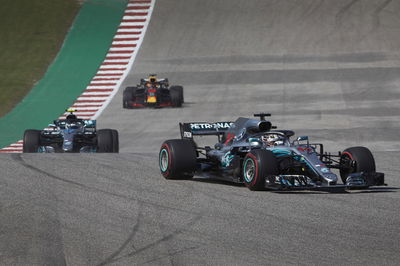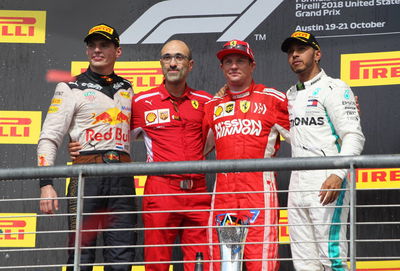Brawn: US GP a case for cutting back F1 data
Formula 1 managing director Ross Brawn feels the unpredictable nature of Sunday's United States Grand Prix acted as a case for cutting back on the data made available to teams in the sport after teams lost the majority of their practice running to wet weather.
Teams got just one hour of dry running prior to qualifying on Saturday after rain washed out much of Friday's practice time, leaving many of them uncertain on strategy and tyre life.

Formula 1 managing director Ross Brawn feels the unpredictable nature of Sunday's United States Grand Prix acted as a case for cutting back on the data made available to teams in the sport after teams lost the majority of their practice running to wet weather.
Teams got just one hour of dry running prior to qualifying on Saturday after rain washed out much of Friday's practice time, leaving many of them uncertain on strategy and tyre life.
This contributed to a thrilling race at the Circuit of The Americas which ended with three drivers - Kimi Raikkonen, Max Verstappen and Lewis Hamilton - from three different teams fighting for victory in the closing stages, all having run different strategies.
For Brawn, this proved what kind of racing is achievable when teams don't have all of the data they require at their disposal, acting as a case for potentially cutting back on what is made available.
"The three drivers on the podium crossed the line within the same three seconds. They all ran different tyre strategies, through choice in the case of Räikkönen and Hamilton and by necessity for Verstappen who started from the penultimate row of the grid," Brawn said.
"That’s unusual in Formula 1, where the level of sophistication in terms of simulation and strategy is so high that one doesn’t usually get such a variance, especially when it involves the top three teams.
"This was probably down to the fact that no one had been able to run dry weather tyres on Friday as the track was wet throughout the three hours of practice. That meant the teams had less data than usual on which to base their race plans, and thus the margin for error increased.
"To use a football metaphor, when two teams play perfectly, a nil-all draw is the logical conclusion. In Formula 1, when the simulations are all worked out to the smallest detail, then they all converge towards the same best possible strategy.
"So does less data produce a better show? It’s definitely more uncertain and therefore another topic for discussion when looking at ways to make our sport even more exciting, from the first lap to the last, as was the case this Sunday in Austin."
F1 officials are already planning on a clampdown on telemetry for the 2021 season that could see a ban on the 'virtual garages' many teams operate back at their bases.











